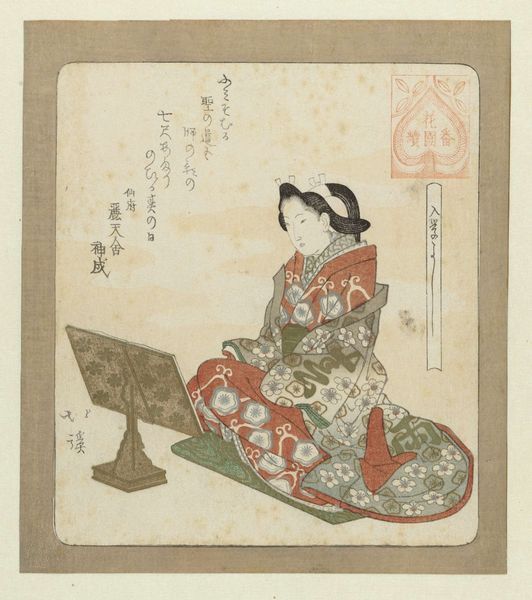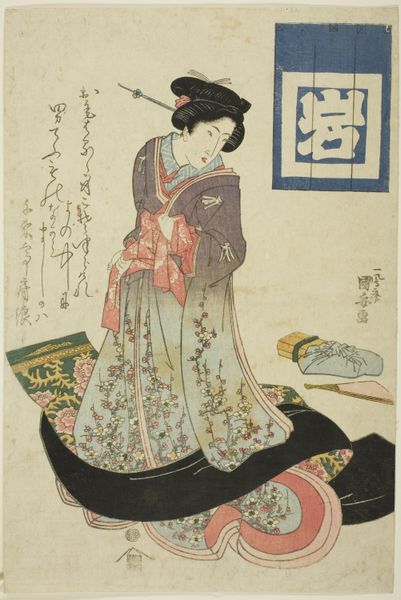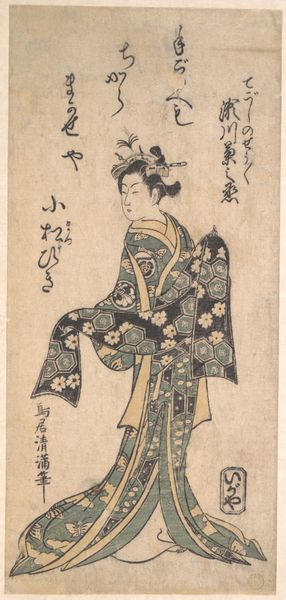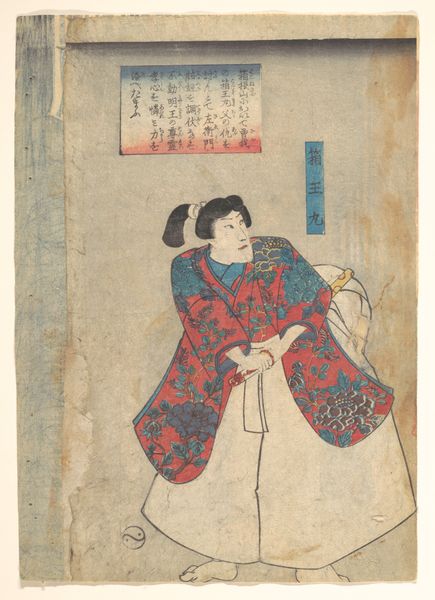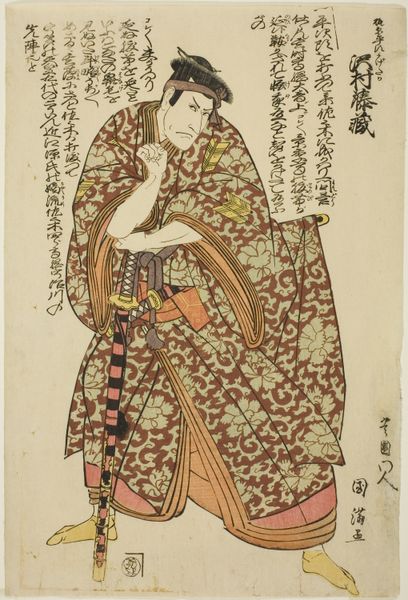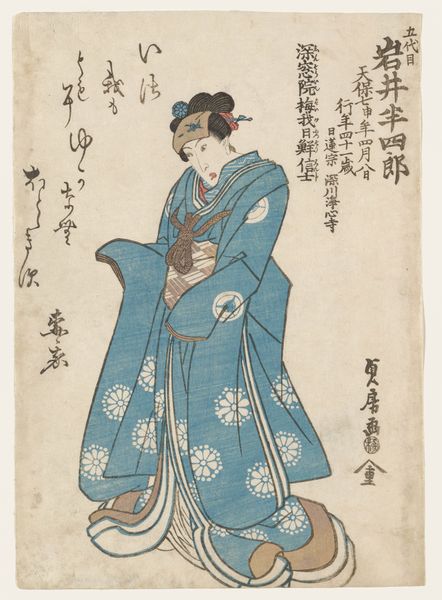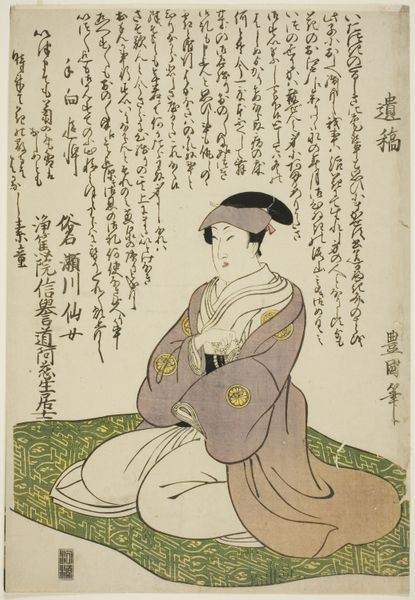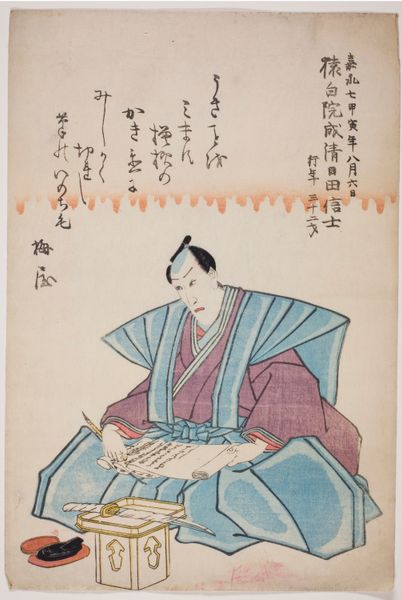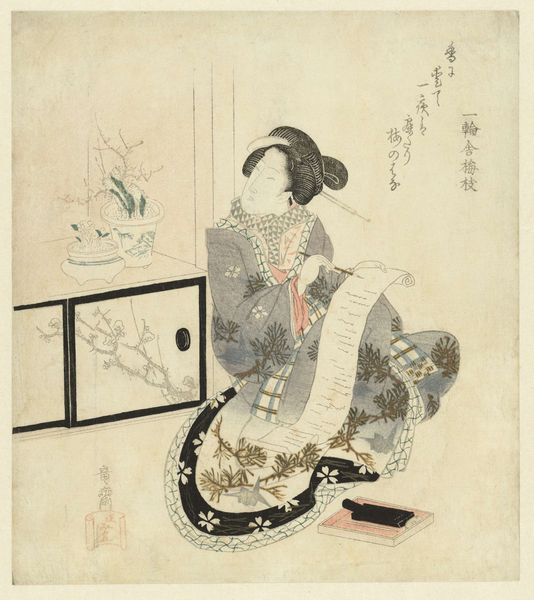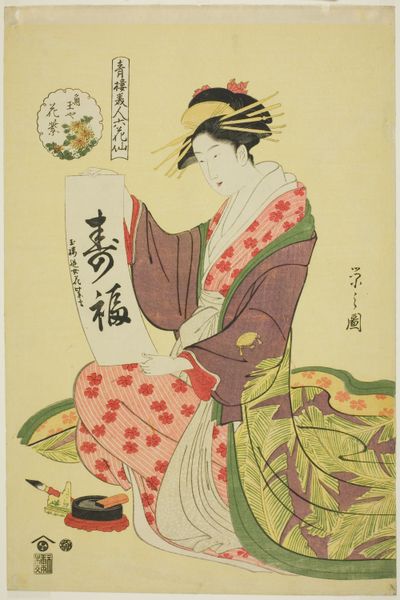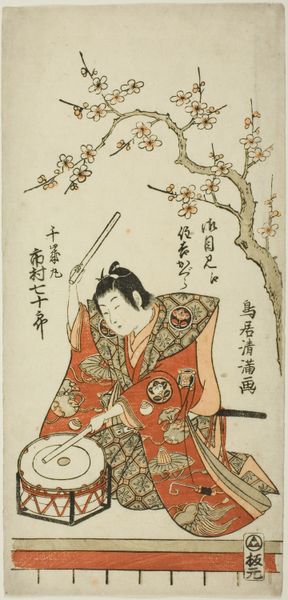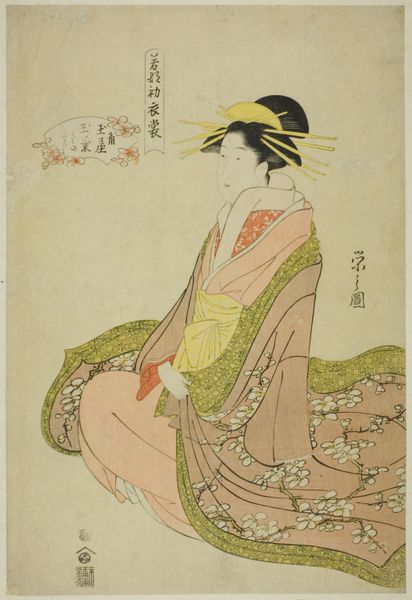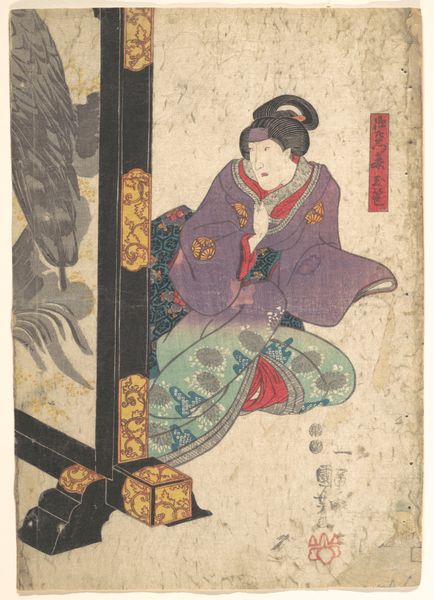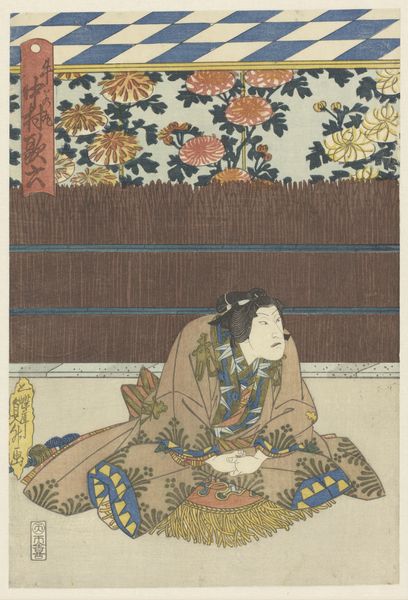
Akizuki Yuminosuke's Daughter Miyuki, Later the blind Musician Asagao (Akizuki Yuminosuke musume Miyuki, nochi ni goze Asagao) c. 1848
0:00
0:00
print, woodblock-print
#
portrait
# print
#
asian-art
#
ukiyo-e
#
woodblock-print
Dimensions: 36.5 × 24.3 cm (14 3/8 × 9 9/16 in.)
Copyright: Public Domain
Curator: This work is by Utagawa Kuniyoshi. Dating to around 1848, it's titled "Akizuki Yuminosuke's Daughter Miyuki, Later the blind Musician Asagao." It’s a woodblock print, now held at the Art Institute of Chicago. Editor: It’s striking how the textures almost overwhelm the figure. The patterned fabrics, the tatami mat...there's a real emphasis on the tangible surfaces. I can almost feel the coarse grain of that instrument beneath her fingers. Curator: Absolutely. Woodblock prints like this were crucial for disseminating popular culture in Edo-period Japan. Think of them as mass-produced images, catering to a broad audience that consumed these prints. This image tells us much about the Kabuki theaters and celebrity culture. The names written upon it suggest ties to a popular star who lived a troubled life of poverty and sickness as her family attempted to survive, playing to cultural empathy with Asagao, a blind woman musician. Editor: I agree, and considering Kuniyoshi’s skill with material details, one can wonder about the workshops, processes, and individual artisans involved in its production. How did the division of labor function? Where did the paper and pigments come from? Considering Asagao was from a Samurai class and was blind by age eight, how were materials chosen to create images based on public feeling for the tragic story? It suggests the image's reception depends significantly on access to this information about materials and historical forces. Curator: It's also intriguing how Kuniyoshi portrays a famous person. Instead of grandly glorifying her, he presents her with a subtle sympathy that engages social politics beyond aesthetic expression. One also notes how social status impacted cultural empathy through institutional practices shaping the artistic narratives from this period. Editor: Right, this artwork raises compelling questions about representation, production, and cultural institutions, particularly when looking into production in Japan during a time where Western audiences sought artistic trade and what historical context the work embodies that reflects class status and how blindness impacts the world in Asagao's lifetime. Curator: Thinking about the tragic beauty in her world as translated through production in her society really adds dimension to how I now read this woodblock print. Editor: I concur; my view now has more depth because of that consideration!
Comments
No comments
Be the first to comment and join the conversation on the ultimate creative platform.
